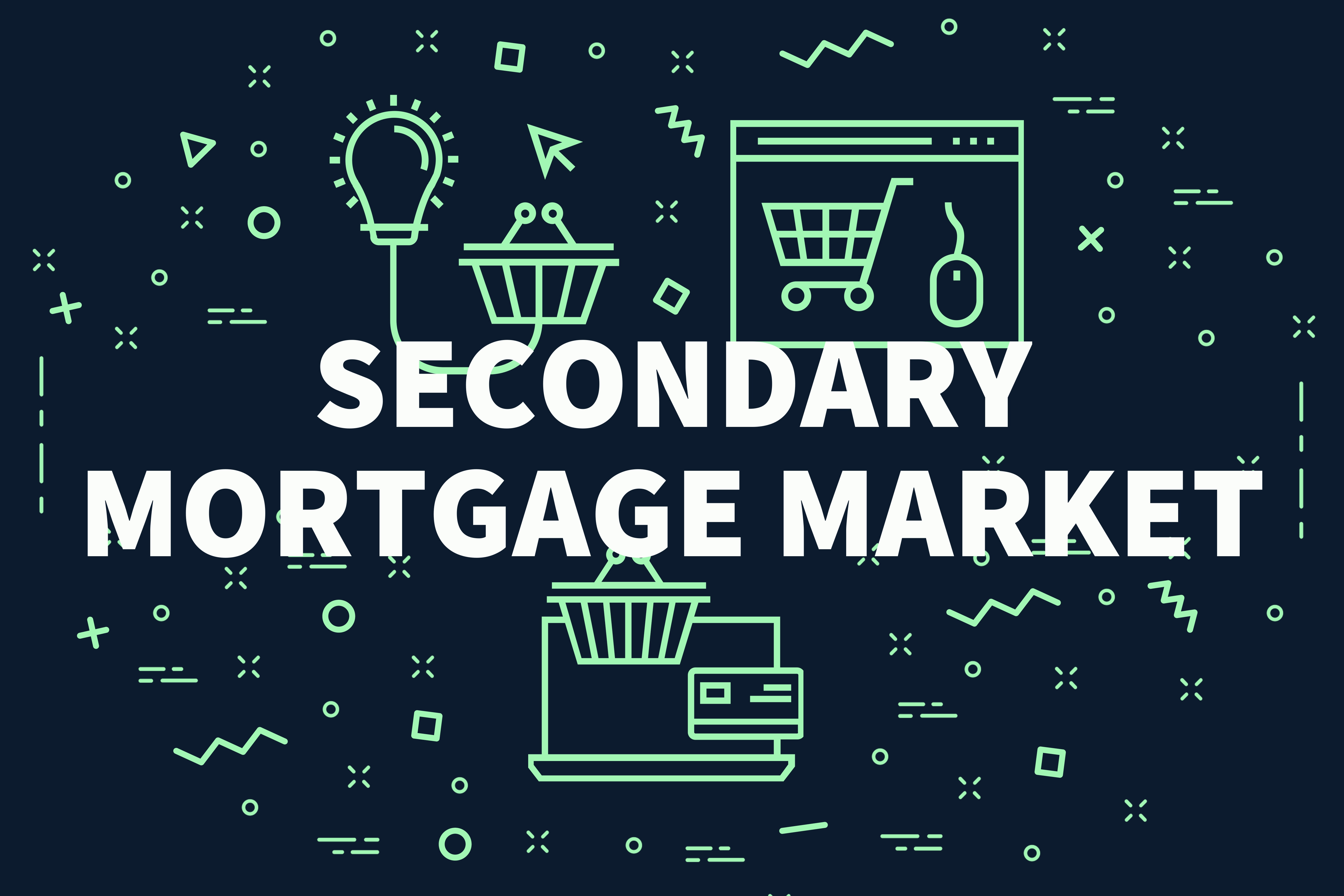
There are lots of new things to learn when you are getting into real estate, and knowing about the mortgage markets is one of them. As a real estate student preparing for your exam, comprehending these markets in depth is not just a requirement, but a stepping stone towards securing your real estate license.
This comprehension won't only serve you in passing the exam, but it will also equip you with the tools necessary to provide informed advice to future clients. After all, understanding the mechanisms of the mortgage markets will be key to your ability to guide your clients effectively through their journey toward homeownership.
So, what exactly are mortgage markets? Mortgage markets involve the process of lending, borrowing, buying, and selling mortgage loans. Essentially, they are the conduits that make home ownership possible. And to fully grasp their workings, it's important to understand that they're divided into two sectors – the primary and secondary mortgage markets.
This blog post is designed as a guide for real estate students to help differentiate between the primary and secondary mortgage markets. I want to cover the definitions, roles of parties market. With this knowledge, you'll be better equipped to navigate and succeed in your future real estate endeavors. So let's delve into the world of mortgage markets and enhance your journey towards becoming skilled real estate professionals.
Primary Mortgage Market: An Overview
The primary mortgage market is where it all begins for homebuyers. It's the marketplace where borrowers and mortgage originators come together to negotiate and agree on the terms of new mortgage loans. In simple terms, it's where you, as a potential homeowner, would obtain a loan to buy - or refinance - a property.
The key players in the primary mortgage market are borrowers and lenders. These banks (or mortgage companies) often provide the funds for borrowers to purchase their dream homes. They are responsible for setting the loan terms, including interest rates and repayment schedule, and verifying the borrower's creditworthiness and ability to repay the loan.
Obtaining a mortgage loan from the primary market is straightforward. A potential homeowner applies for a mortgage loan from a lender. The lender then scrutinizes the applicant's credit history, current income, employment status, and other factors before approving the loan. Once the loan is approved and the agreement is signed, the borrower begins to repay the loan, typically for 15 to 30 years.

Consider this scenario: John and Sarah, eager to buy their first home, approach their local bank for a mortgage loan. After reviewing their application and assessing their financial position, the bank approves their loan at a fixed interest rate for 30 years. This entire transaction is part of the primary mortgage market.
As real estate students, understanding the primary mortgage market's functioning is crucial. It provides the foundation of the mortgage industry and is the starting point of most real estate transactions.
Secondary Mortgage Market: An Overview
While the primary mortgage market involves the creation of new mortgage loans, the secondary mortgage market revolves around the buying and selling of existing mortgages and mortgage-backed securities. Home buyers do not directly participate in the secondary mortgage market as this is largely the domain of large financial institutions and investors.
Investors and financial institutions, like Fannie Mae and Freddie Mac, play a significant role in the secondary mortgage market. These government-sponsored entities buy existing mortgage loans from lenders, bundle them into mortgage-backed securities, and then sell them to investors. This process frees up the lender's resources, allowing them to issue more loans in the primary mortgage market.
For instance, let's revisit John and Sarah's story. After their bank granted them a mortgage, the bank could then sell it to a larger financial institution like Fannie Mae. Fannie Mae then pools John and Sarah's mortgage with hundreds of similar mortgages to create a mortgage-backed security, which is then sold to investors. This entire transaction takes place in the secondary mortgage market.
Why does this matter to real estate students? Understanding the secondary mortgage market is essential as it directly influences the primary mortgage market. It dictates mortgage rates and availability of loans and contributes significantly to the overall health of the real estate market. It’s a key component of the knowledge you'll need to obtain your real estate license.
Secondary Mortgage Market: An Overview and Its Significance
As discussed, while the primary mortgage market is initial loan creation, the secondary mortgage market is where existing mortgages and mortgage-backed securities (MBS) are bought and sold. It may seem abstract compared to the more direct borrower-lender interactions of the primary market. Still, its impact is far-reaching and fundamental to the functioning of the broader economy.

The secondary mortgage market's leading players are large financial institutions and investors, including government-sponsored entities like Fannie Mae and Freddie Mac. These entities buy existing mortgage loans from lenders, package them into MBS, and then sell these securities to investors on the open market. This cycle is an economic engine that keeps mortgage funds flowing – but how exactly does it work, and why is it so crucial?
Liquidity and the Recycling of Capital
In essence, the secondary mortgage market provides liquidity to the banking system. When lenders, such as banks, originate a loan in the primary market, that loan is an asset tied up in the property for the duration of the mortgage term, often 15 to 30 years. This represents a significant commitment of the lender's capital, limiting their ability to offer new loans.
Lenders can recycle their capital by selling these loans on the secondary market. The sale frees up their resources, allowing them to originate more loans. It's akin to a fresh injection of cash into the primary market. The more active the secondary market, the more liquidity lenders have, ultimately making mortgages more accessible to potential homeowners.
Why Investors Buy Mortgage-Backed Securities
But why would investors want to buy MBS? The answer lies in the appeal of these instruments as investment vehicles. Mortgage-backed securities are income-generating assets. The monthly mortgage payments made by borrowers (consisting of principal and interest) pass through to MBS investors as regular income, making them an attractive long-term investment.
Furthermore, MBS are often considered lower-risk assets. Real estate, a physical asset, backs them and often carries guarantees from government-sponsored entities against defaults on the underlying loans. This combination of regular income and lower risk makes MBS popular among many investors.
So you can see that the secondary mortgage market plays an essential role in maintaining liquidity in the banking system and ensuring the availability of mortgage loans. It's the lifeblood of the housing market, turning individual home loans into a cycle of capital that benefits lenders, investors, and homeowners alike. It's a foundational concept for any real estate professional to understand, as it influences mortgage availability and rates and the broader health and vibrancy of the real estate market.
Navigating the labyrinth of the real estate market can be challenging, especially for students preparing for their real estate license exam. Hoping this guide helps as we now understand that the primary mortgage market is where loans are originated, with lenders and borrowers negotiating the terms of new mortgage loans. In contrast, the secondary mortgage market involves the buying and selling existing loans by investors and financial institutions like Fannie Mae and Freddie Mac.
The key takeaway is the interdependence of these two markets. They influence each other significantly, dictating mortgage rates, the availability of loans, and, thus, the overall health of the real estate market.
Understanding these markets equips real estate students with the knowledge necessary for acing their real estate license exam and launching successful careers in real estate. It enables you to provide comprehensive advice to your future clients and better understand the factors influencing the market conditions.
We encourage you to continue exploring these concepts, digging deeper into how they function and their influence on the broader real estate market. Remember, every bit of knowledge gained now is a step towards becoming a proficient real estate professional, ready to make your mark in the dynamic world of real estate.
As always, if you are interested in getting your real estate license or building a career in real estate sales visit www.adhischools.com or call us at 888-768-5285.
Love,
Kartik
Can You Take the California Real Estate Exam Online?
California Real Estate License Delays: How to Pass DRE Education Verification Fast
Holiday Home Sales: A Hidden Opportunity for Agents
What Happens When the DRE Denies Your License (and How to Fight Back)
Out-of-State Agents: Transferring a Real Estate License to California

Founder, Adhi Schools
Kartik Subramaniam is the Founder and CEO of ADHI Real Estate Schools, a leader in real estate education throughout California. Holding a degree from Cal Poly University, Subramaniam brings a wealth of experience in real estate sales, property management, and investment transactions. He is the author of nine books on real estate and countless real estate articles. With a track record of successfully completing hundreds of real estate transactions, he has equipped countless professionals to thrive in the industry.